Three lessons we can learn from TV advertising in the UK
One of the many advantages we have as marketers is the access to so much diverse, interesting insight. At Smart Insights, we regularly blog about the latest trends in email, display, search and social, all of which give us the opportunity to improve our knowledge and understanding of the marketing landscape.
The latest research from Thinkbox, the marketing body for the main UK commercial TV broadcasters (Channel 4, ITV, Sky Media, and Turner Media Innovations), provides some interesting data points on how media is being consumed in the UK. Although many of us may never use television advertising as part of our media mix, the research provides some useful insight into how people are consuming media in the UK and how this impacts other forms of marketing.
Download our Free Resource – 10 digital marketing megatrends 2019
This free guide for all members shows how your business can get an edge by reviewing five key types of marketing trends and specific digital marketing techniques that will help your business become more competitive.
Access the
The main caveat here is that whenever a marketing body for a specific industry (e.g. IAB for digital, MarketReach for Mail) publishes research, there will always be an element of bias. Our job as marketers is to ‘filter’ information from various sources and develop a balanced, rounded view of the world.
So with this in mind, let's look at some of the most eye-catching insight from Thinkbox and what the implications for marketers are.
1. TV viewing is stable but how we watch is changing
The popular opinion that ‘TV is dead’ has long been debunked. Whilst traditional ‘live’ TV is falling, overall TV viewing has increased by seven minutes over the last ten years:
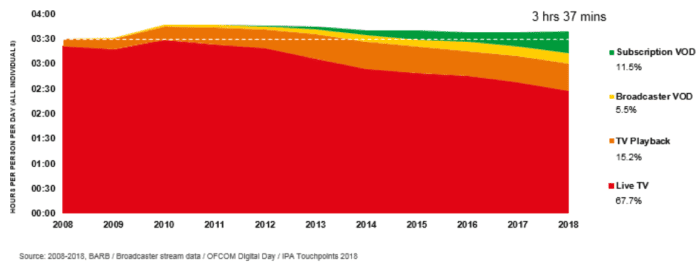
Viewing behaviour differs by show. For example, somewhat unsurprisingly, sport has high levels of live viewing whereas primetime drama is more likely to be time-shifted as people take their time to watch a series over the course of several days and nights.
Live sport
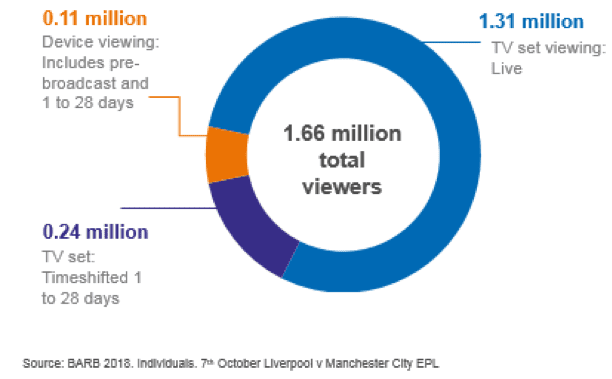
Primetime drama
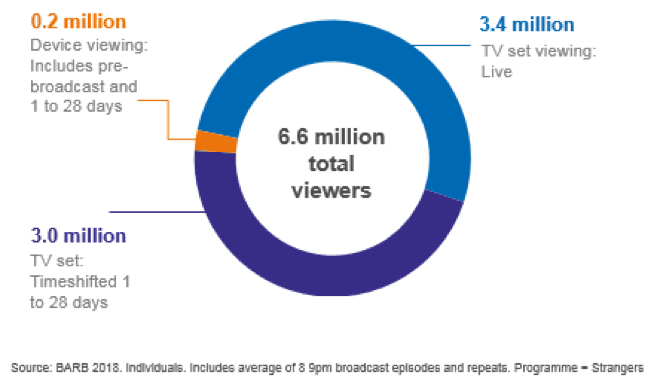
The view that younger people watch less TV has an element of truth, although this is again related to the type of TV they consume rather than ‘TV’ in general. As we can see below, the shift to subscription VOD as this channel has evolved is very distinct for younger audiences.
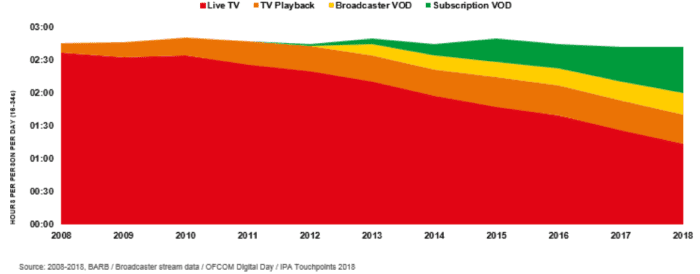
2. Marketing effectiveness is in crisis
Analysis conducted by the IPA indicates that the last ten years has seen a decline in marketing effectiveness.
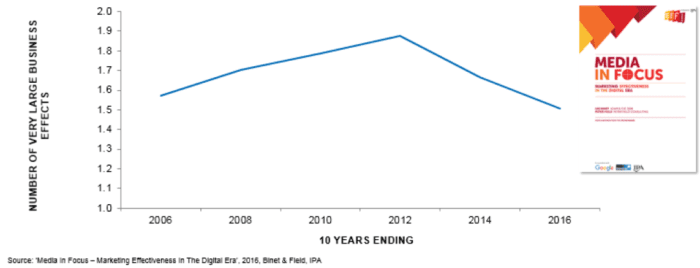
Enders Analysis found that there are five key drivers:
- Short tenure of marketing directors
- Record CEO incentives for short-term targets
- Over-reliance on attribution/ short-term data to optimize plans
- Rise in control of procurement teams
- Growth of direct response (DR) advertising (from 40% to 50%)
These drivers combined has led to an over-reliance on short-term planning, often resulting in sales activation, which is easy to measure and can have powerful (short-term) effects.
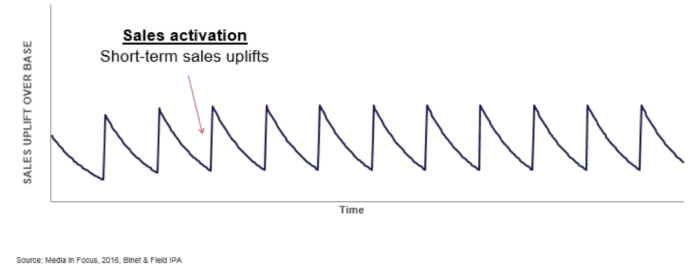
With so much scrutiny on agency performance and changes in personnel at the top of the marketing tree within organizations, short-term tactics have come at the expense of longer-term brand-building, which is often much more difficult to measure and takes patience and time.
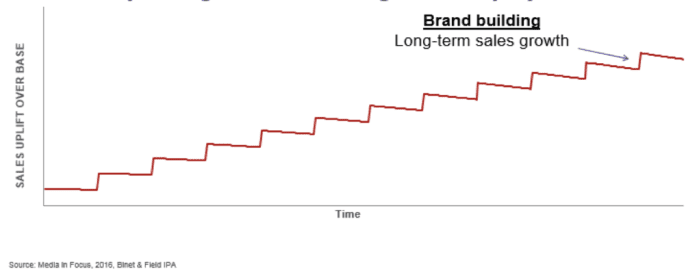
The solution? Brand building and sales activation should work together.
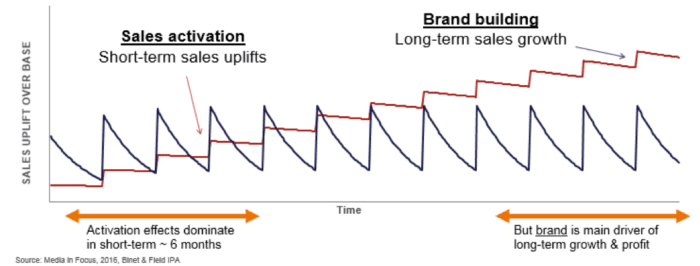
Brand-building has been shown to be the main driver of effectiveness in all sectors. However, this should not be instead of sales activation but with sales activation: they can work in harmony.
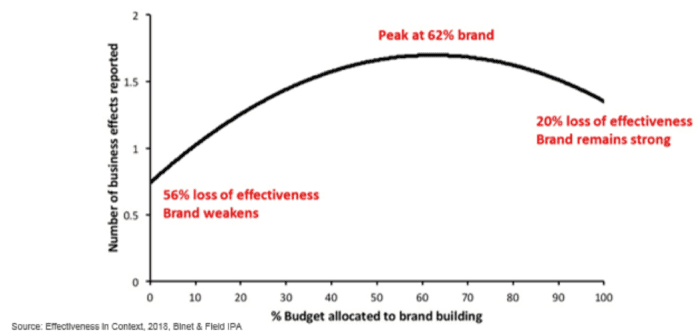
3. The business case for advertising
Thinkbox conducted a research study called Profit Ability: the business case for advertising. In a nutshell, the research demonstrates how TV advertising can be effective in both the short and long term.
Short-term
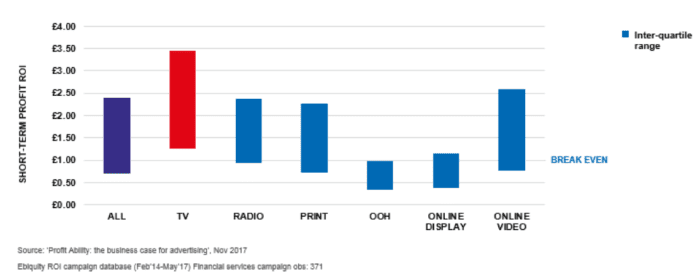
Long-term
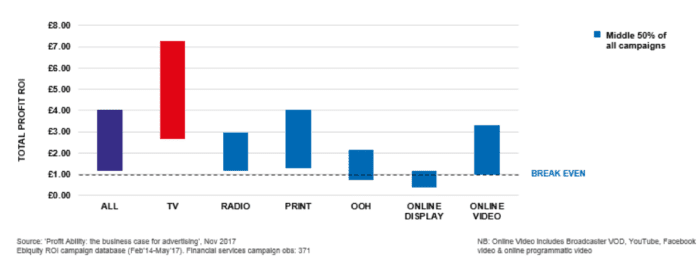
The core reasons for this effect is rooted in behavioural science, which explores human judgement and decision-making:
- Most of what influences us is subconscious (system one thinking).
- We are heavily influenced by context (anchors, short-cuts etc.).
- Cognitive biases are massively influential (e.g. herding, scarcity bias etc.).
TV advertising leverages cognitive biases by creating:
- Repetition (mere exposure effect) - The more we see something, the more we like it.
- Recency (the recency effect) - We place the most importance on things we have encountered recently.
- Social norms (social proof) - We tend to imitate how those around us think and act.
TV, therefore, enables companies to build their brands by adding ‘colour’ to people’s lives:
- Branding influences our product experience and perceptions.
- This provides a perceptual anchor that colours a brand experience.
Brands do this by providing a sense of connection, stability and identity. Of course, not all of us will have the financial clout to invest in TV to build our brands over the short and long-term. However, we can take inspiration from what has worked for TV and bring this into other elements of the marketing mix.
Connection
Brands provide a connection by:
- Becoming an extension of our core values.
- Connecting to our personal history, enabling them to trigger an emotional response.
- Heuristics and mental availability. The more we see a brand, the more prominent they are in our mental shortlist of brands.
Stability
Brands provide stability by:
- Playing on our dislike of change. We like consistency and brands provide that comforting feeling of something we know (e.g. seeing a McDonald’s in an unfamiliar place).
- Combating our feeling of loss aversion.
Identity
Brands become part of our identity by:
- Priming how others see us
- Anchoring into our moral values
- Providing authority bias and reflecting social norms
Conclusion
The latest research and insight from Thinkbox provides some pretty compelling evidence of the effectiveness of TV as an advertising medium. However, one must always put this into context: Thinkbox represents the TV industry and, therefore, has a vested interest in promoting what works for them. Nevertheless, the insight shines a light on how media is being consumed in the UK and can provide an indication as to the technology and content that resonates best with different demographics.
Marketing effectiveness has seen a drop over the last ten years and TV’s ability to reach large audiences with its advertising gives this channel a distinct advantage over others. Even so, we can learn from what TV can do so well:
- Connection
- Stability
- Identity















